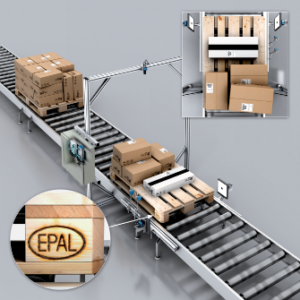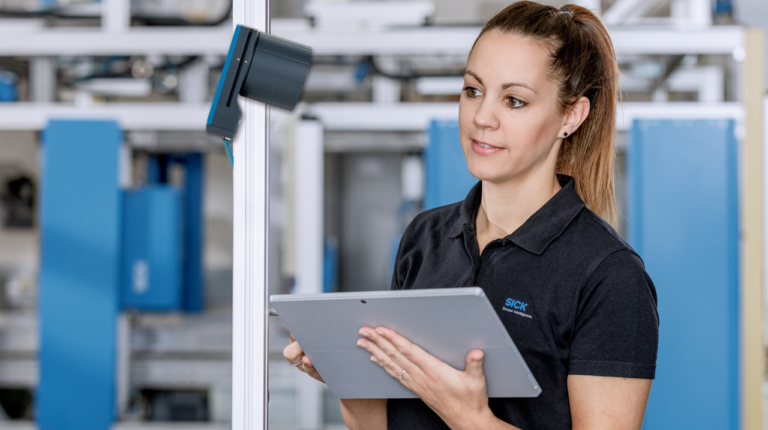Philipp Behrends, global industry manager CEP & Freight, SICK, will explain how sensors and software can help increase throughput, cope with labor shortages, support sustainability targets, and increase customers happiness, at the free-to-attend Parcel+Post Expo Innovation Forum, in Amsterdam, October 24-26, 2023.
What is your presentation about?
I’ll talk about how parcel and postal corporations can maximize the throughput, uptime and asset utilization in their sorting hubs, depots and freight centers.
What sensors will you discuss?
- High-resolution line cameras for reading barcodes at high speeds.
- Matrix cameras for hand presentation barcode reading.
- The Pallet Classification System, which consists of cameras and a controller. It analyses the pallet foot imprints and classifies the pallet type accordingly.
- The FTMg flow sensor, that measures flow rate, pressure and temperature of compressed air running through pipes in the facility.
- The TiM, a 2D lidar senor that scans the interior of truck trailers.
How can sensors be used to boost operational excellence?
Sensors can measure conditions, such as fill level, to determine the utilization of an asset. If a station runs empty on material, or if a trailer is filled completely, follow-on actions can be triggered automatically, e.g. replacing a bin or sending off full trailers. As a result, more shipments can be processed on the same floor space, as half-empty runs and occupied chutes are reduced.
Secondly, sensors can also help to automate processes that were performed manually beforehand. Scanning packages with an overhead camera will double the hourly scan rate, plus make the whole procedure much more ergonomic for the worker.
 What benefits do they provide the post, carrier or logistics supplier?
What benefits do they provide the post, carrier or logistics supplier?
Sensor data is used to speed up processes. CEP corporations can therefore increase the throughput of their existing sorting centers. A high read rate supports automated handling of packages, meaning less cost-intensive manual reworking is required. Classifying packages and pallet types also helps to generate extra revenue. Pallet deposits can be collected, and additional fees for specific shipment classes can be charged.
What are the biggest challenges?
Finding sufficient time slots to install sensor systems, as sometimes operations need to stop for an installation over the conveyor/sorter.
What will the audience learn from the presentation?
How you can get the most out of your existing sites with sensor-driven, automated processes. It’s cost-efficient, it’s economically sound and it’s more sustainable than building a new site.
 Are there any other highlights that it’s important to mention?
Are there any other highlights that it’s important to mention?
I’ll show snapshots of the virtual warehouse, a digital twin of a logistics center. Visitors at Parcel+Post Expo are very welcome to visit us at booth 12.338 to stroll through the virtual exhibit themselves.
Don’t miss Behrends’ presentation, ‘How sensors boost your operational excellence’, which is part of the ‘Parcel sorting, robotics, and automation’ track, on Wednesday (Day 2), October 25.
See the full conference program, here.


